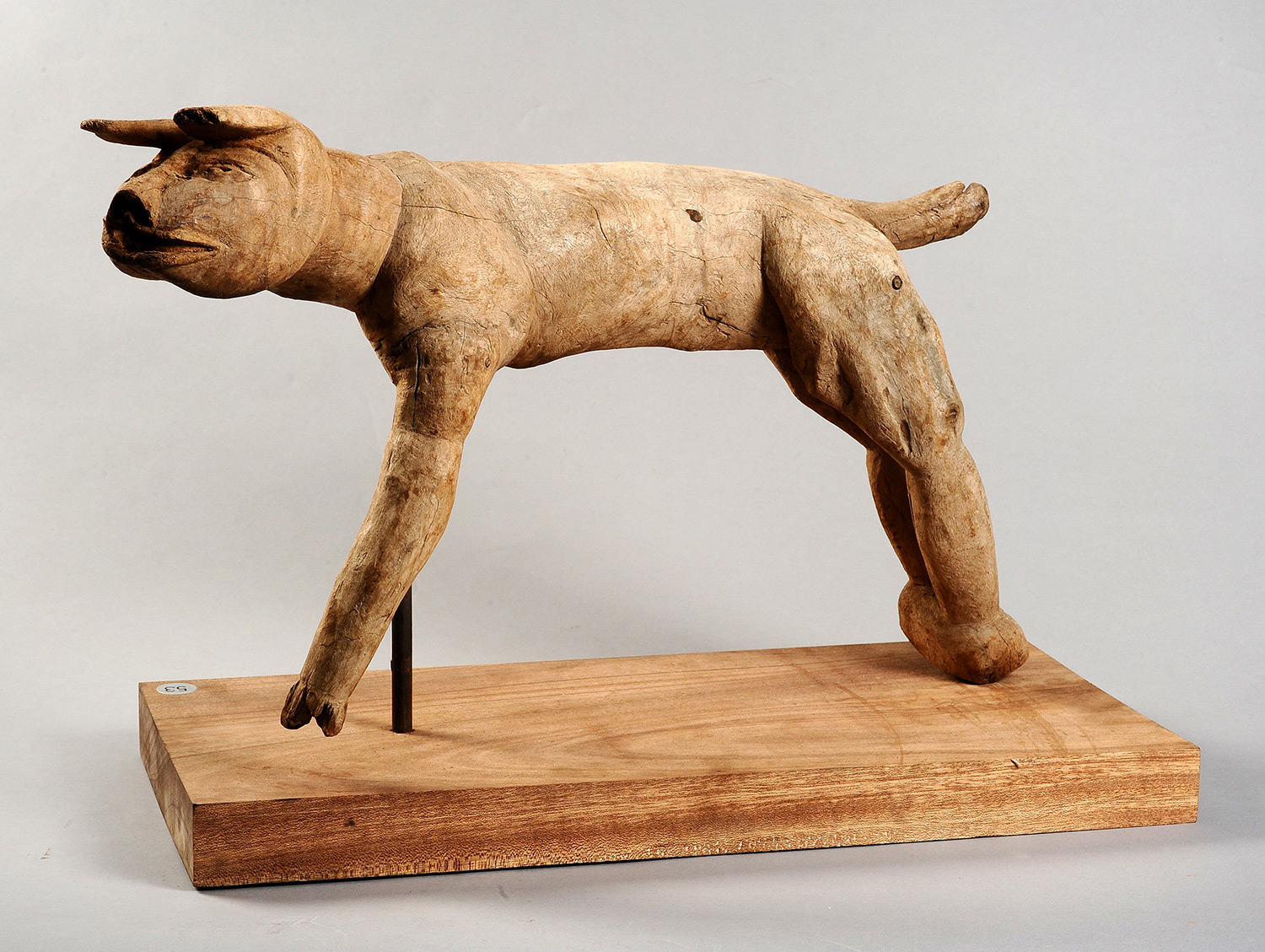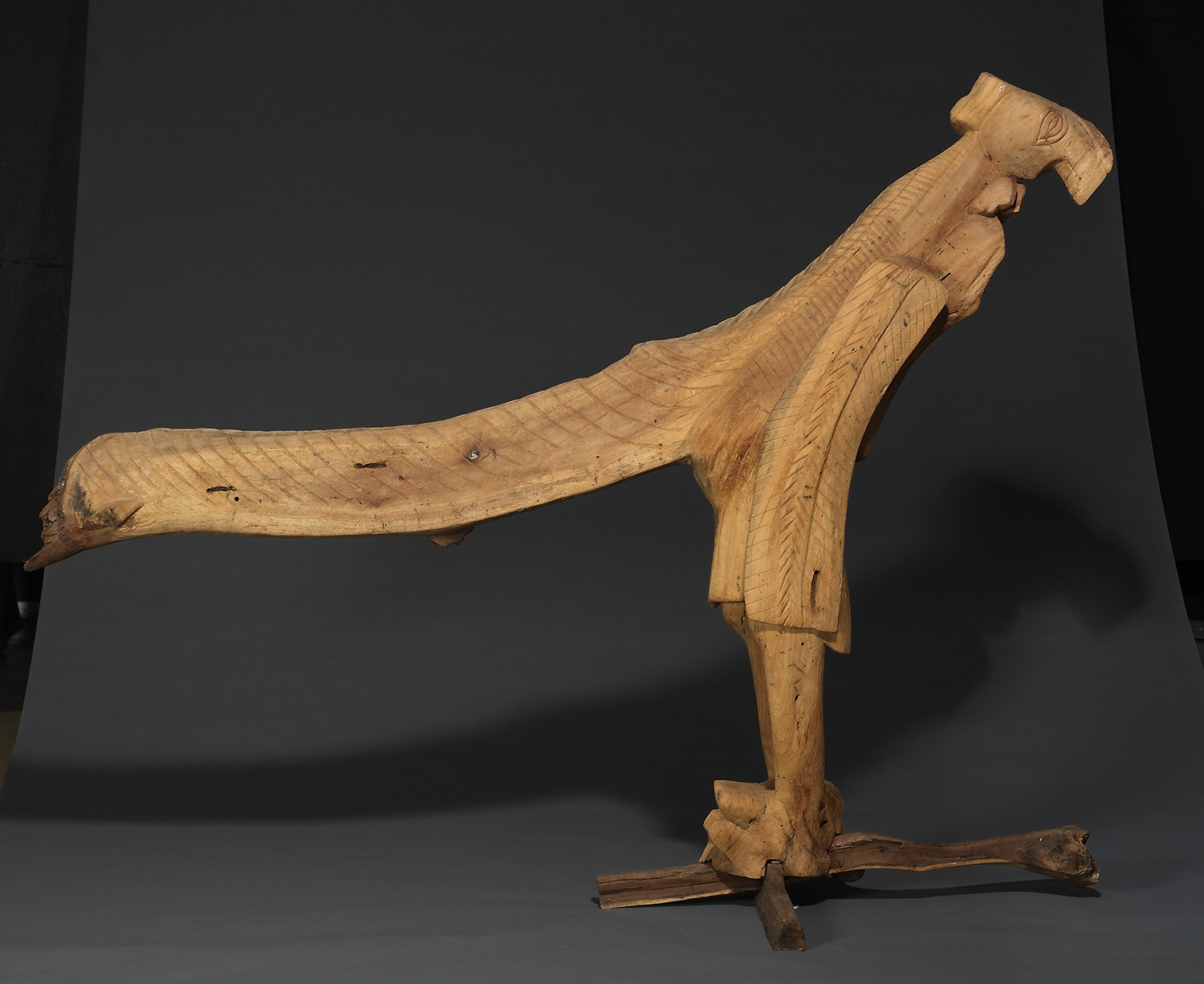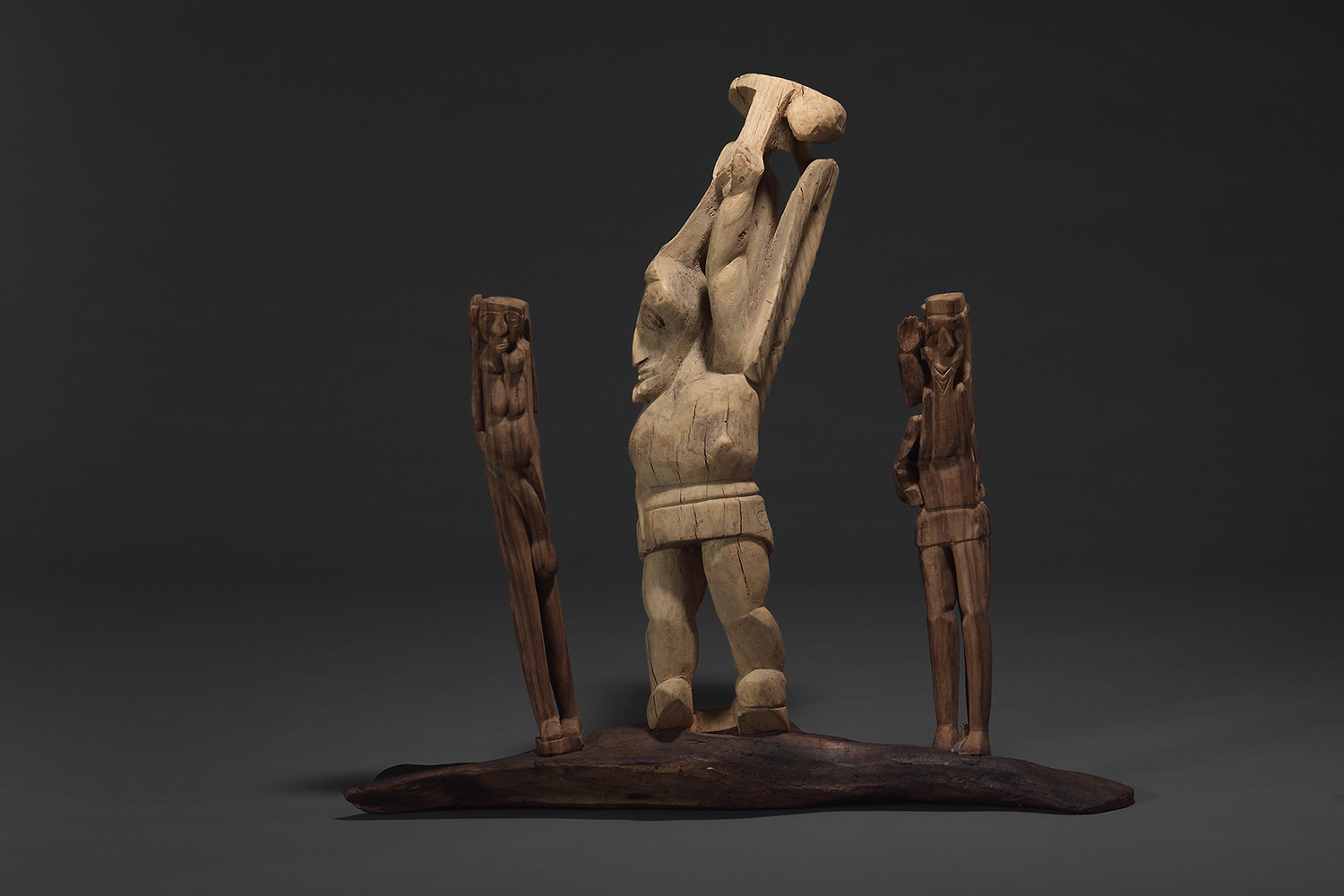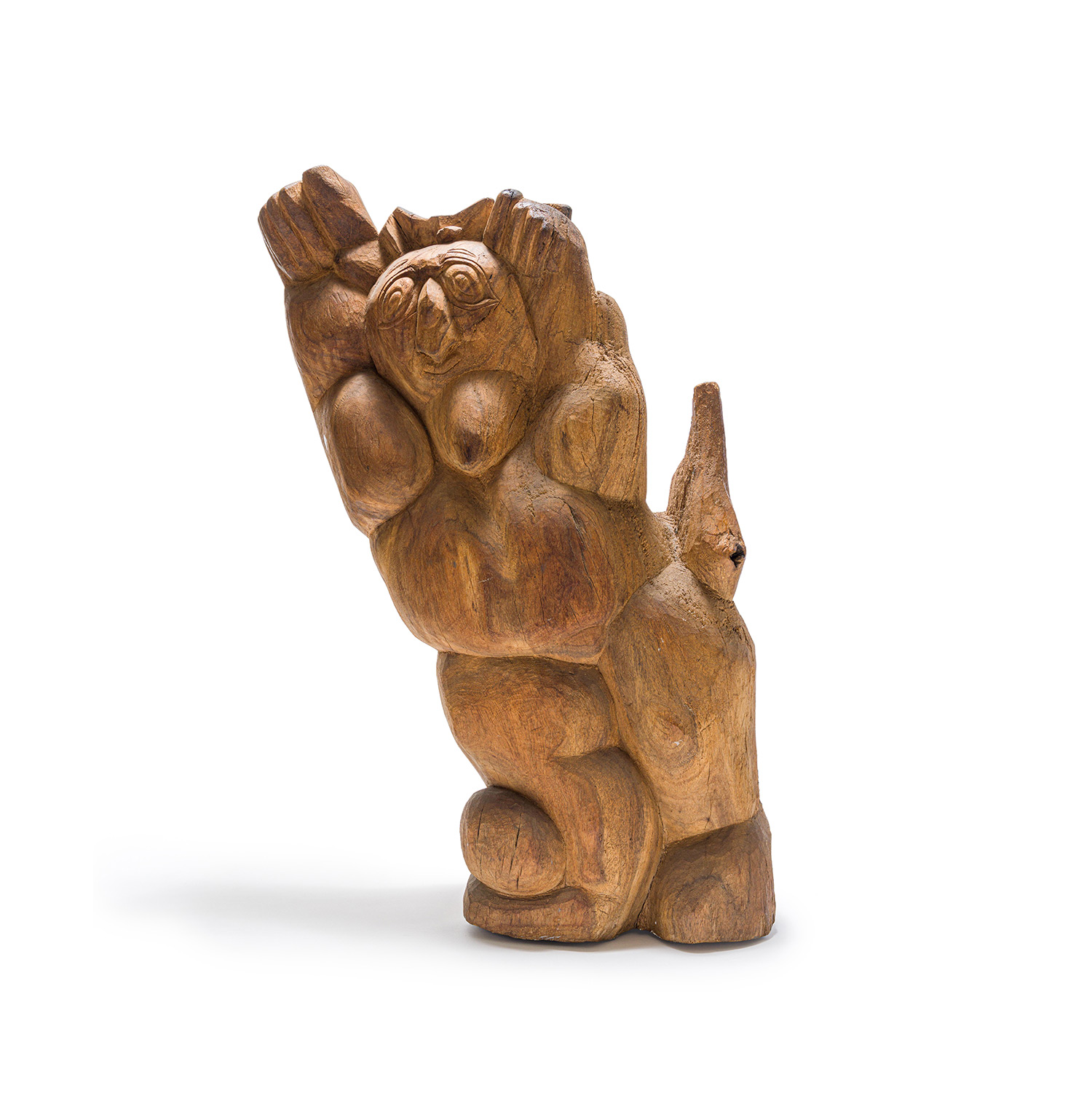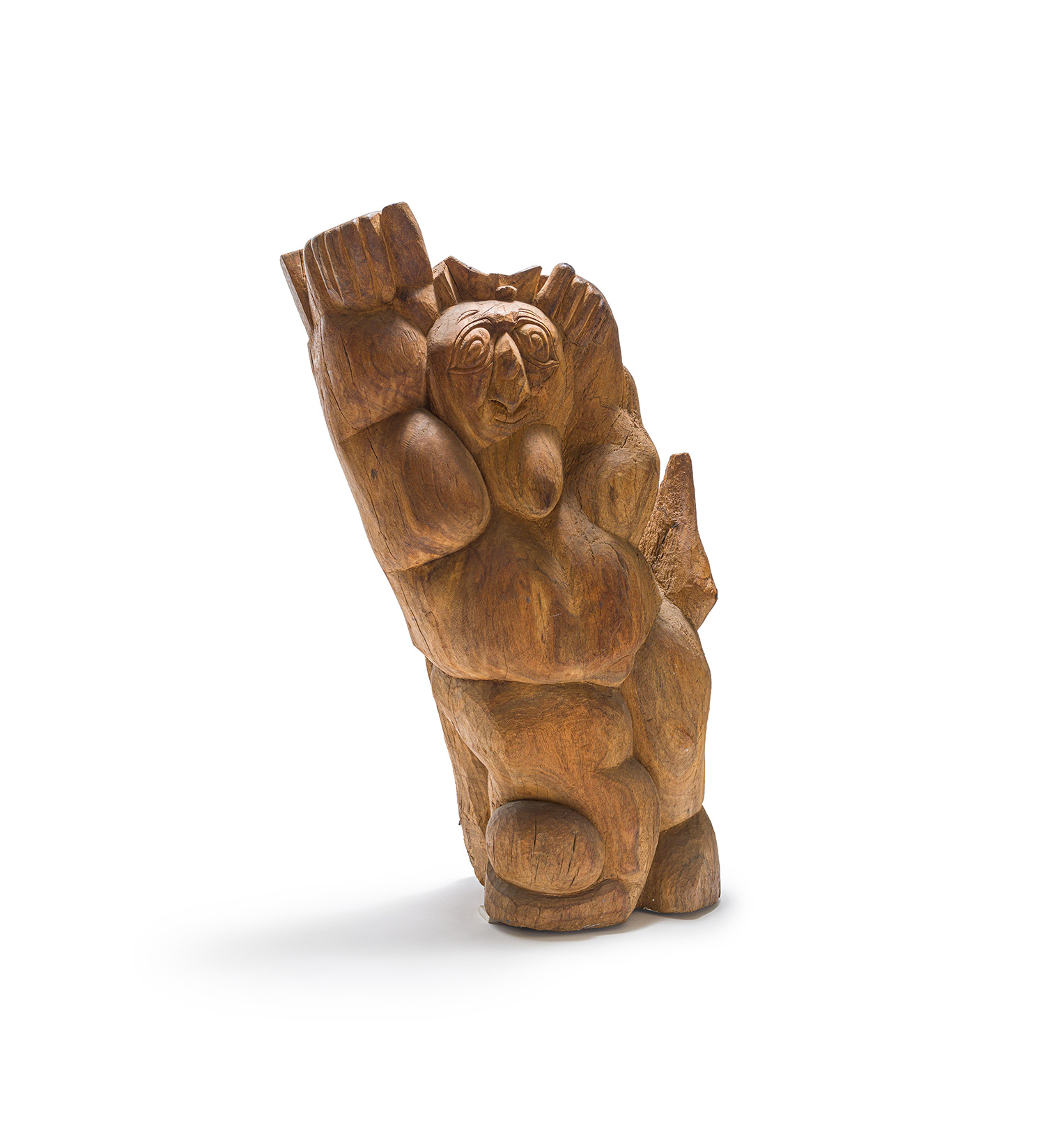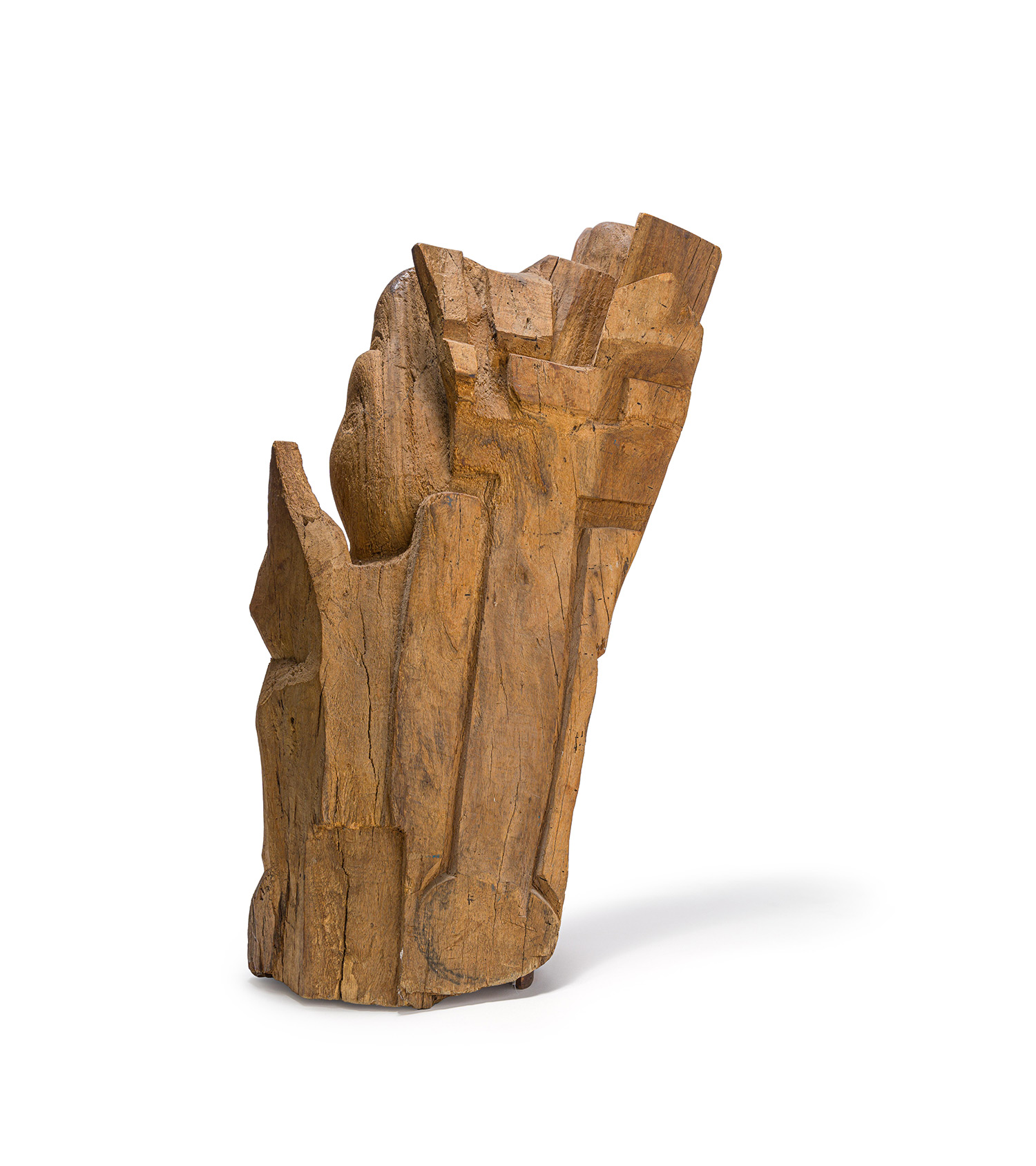Jackson HLUNGWANI (1923 – 2010)
BIOGRAPHY
Jackson Hlungwani was a South African sculptor, priest and founder of the Yesu Galeliya One Aposto in Sanyoni Alt and Omega in New Jerusalem, a site located in Mbhokota in Limpopo province. Hlungwani was a deeply religious man and his work is defined by its spirituality and connection to community. Highly innovative, he developed a visual language that integrated traditions of Tsonga-Shangaan wood carving, southern African spirituality, popular culture and biblical narratives.
He had no formal training as an artist and learned to carve from his father who made utility items for his community. He spent time as a migrant worker in Johannesburg but returned home after an industrial accident in which he lost a finger. Hlungwani’s earliest extant sculptures date to the 1960s, although it is the work of the 1980s and later that became widely known and appreciated.
For many years, Hlungwani lived in Mbokhoto, approximately 38 kilometres from Louis Trichardt in northern Limpopo. He selected a particular site on top of a hill, where there were the remains of Iron Age stone structures. He built his home among these ruins and used a few unroofed circular rooms. He named the site New Jerusalem. In the mid 1990s, he moved to a more accessible site nearby, which he named New Canaan, representing not only a physical move but a spiritual shift in his continually developing theology.
Hlungwani’s work cannot be understood outside of a local African Christian context. He talks of Christ as his mentor and the source of his creativity. He tells of a desperate time in his life when he was severely ill and wanted to commit suicide but was stopped by a vision of God whose legs he saw in the sky. He heard the voice of Christ who gave him three instructions: Hlungwani should start his own church, make carvings and use them in his teaching. He carried out all of these directives and, from that point onwards, much of his work was religious in content and didactic in intent. He continued, throughout his career, to items, such as bowls, walking sticks and thrones, which are remarkable sculptures in their own right.
Hlungwani, like other leaders of the over 6 000 African Independent churches in South Africa, was both a charismatic spiritual leader and a healer. In his hill-top sanctuary, he built two altars, one for women and one for men, which he embellished with figurative sculptures; he narrated their roles during his religious services and healing procedures. Both altars were removed for display in his retrospective exhibition in Johannesburg in 1988 and were subsequently purchased by local art institutions. All that remains of New Jerusalem are the ruins, the stone altars and the Aerial to God – a decorated telephone pole literally reaching to the sky.
He used only hand tools to carve his powerfully realised forms, as there was no electricity where he lived. Adzes and axes to create the broad general shapes, chisels for details and marking patterns, and sandpaper to smooth out some of the rough edges. Ricky Burnett considered Hlungwani ‘the greatest carver in the country’.
Hlungwani believed that the religious works made for sale to the commercial art market and not for churches of any kind, carried messages and acted as proselytising vehicles wherever they were located. His son Gazaland, whom he taught to carve, and has run a number of workshops in Johannesburg, Soweto and at his home in Limpopo.
Alt and Omega: Jackson Hlungwani, an immersive and inclusive look into his artistic practice curated by Karel Nel, Nessa Liebhammer and Amos Letsole, ran at Norval Foundation, Steenberg, Cape Town, from 2020 to 2022. This survey of his artistic practice from the 1970s to his death in 2010 brought together key works from his career and included a contextually sensitive display of his tour de force, New Jerusalem.


